
In just a few months, Covid 19 has spread across the globe and left in its wake a trail of social paralysis, economic ruin and even death. While states across the US issued stay at home orders to slow their healthcare systems from being overrun, other states like New York, weren’t so lucky. As some U.S. states start to lift pandemic-related restrictions on businesses and public spaces, there is a fear that infections will resurge in those places — and that if that happens, the virus won’t stay put.
Crystal Watson of the Johns Hopkins Center for Health Security said “I do believe we are going to see additional surges of cases from this epidemic that will not be contained within a state. Neighboring states and perhaps states across the country and countries across the world are going to have cases imported from those outbreaks.” Experts say the problem is that diagnostic testing remains so limited that a second surge of cases could silently build. The nationwide goal of conducting 2 million tests a week is below what most experts say is needed to adequately track the virus and that plan won’t be in place until at least the end of May.
No one knows how quickly and how expansively the spread of the virus will pick up as states roll back restrictions, and governors are generally outlining gradual changes. The incubation period of 2 to 14 days coupled with the turn-around time of test results in some areas taking a few days, means we just have to wait and see if reopened states will experience a surge in cases. More than half the states have relaxed restrictions but experts say it will be at least two to three weeks before we see an increase in the number of infections because it takes time for individuals to infect others and for them to display symptoms.
Public health experts warned of the possibility of spikes before states made the decision to reopen. Even as their predictions prove true in some states, others are still moving forward with plans to reopen. Proponents of relaxing social distancing restrictions also point out that spikes in positive cases are to be expected with expanded testing.
In Georgia, gyms, salons, and restaurants are operating with limits. In Colorado, retail stores can have curbside pickup and elective surgeries are back on. And starting tomorrow, malls, theaters, and restaurants in Texas can open with 25% occupancy. These and other states have plans for further easing of distancing policies as long as case counts don’t spike. If these states do see spikes they may have to roll back the restrictions as needed.
Read more
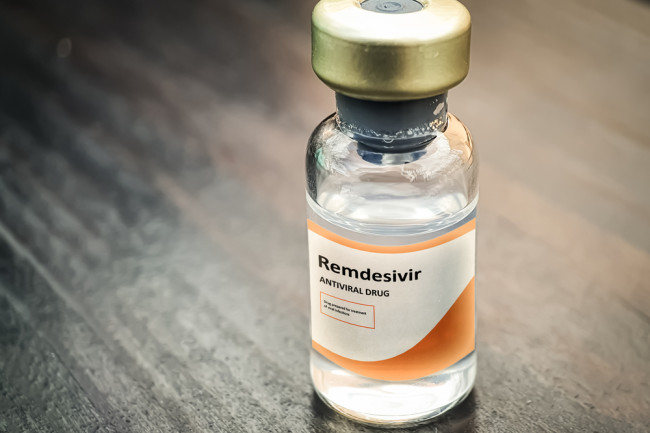
The Food and Drug Administration (FDA) announced the emergency use authorization for the antiviral drug remdesivir, after preliminary results from a federal trial showed the drug could speed recovery in patients infected with the coronavirus. The finding, which has not yet been peer reviewed, came after another study found no benefit for the drug in severely ill patients in China. The new results suggest a moderate improvement in the death rate of patients taking remdesivir, whose hospital stays were shortened, on average, from 15 days to 11.
The issuance of an EUA is different than FDA approval. In determining whether to issue an EUA, the FDA evaluates the available evidence and carefully balances any known or potential risks of any unproven products with any known or potential benefits of making them available during the emergency. Based on evaluation of the emergency use authorization criteria and the scientific evidence available, it was determined that it is reasonable to believe that remdesivir may be effective in treating COVID-19, and that, given there are no adequate, approved, or available alternative treatments, the known and potential benefits to treat this serious or life-threatening virus currently outweigh the known and potential risks of the drug’s use.
The emergency use authorization (EUA) allows for remdesivir to be distributed in the U.S. and administered intravenously by health care providers, as appropriate, to treat suspected or laboratory-confirmed COVID-19 in adults and children hospitalized with severe disease. Severe disease is defined as patients with low blood oxygen levels or needing oxygen therapy or more intensive breathing support such as a mechanical ventilator.
The EUA requires that fact sheets that provide important information about using remdesivir in treating COVID-19 be made available to health care providers and patients, including dosing instructions, potential side effects and drug interactions. The EUA is temporary and will be effective until the declaration that circumstances exist justifying the authorization of the emergency use of drugs and biologics for prevention and treatment of COVID-19 is terminated. It may be revised or revoked if it is determined the EUA no longer meets the statutory criteria for issuance.
Possible side effects of remdesivir include increased levels of liver enzymes, which may be a sign of inflammation or damage to cells in the liver; and infusion-related reactions, which may include low blood pressure, nausea, vomiting, sweating, and shivering.
The top coronavirus task force scientist Dr. Anthony Fauci welcomed news of the first potential treatment for COVID-19. The U.S. government will coordinate the donation and distribution of remdesivir to hospitals in cities most heavily impacted by COVID-19. Given the severity of illness of patients appropriate for remdesivir treatment and the limited availability of drug supply, hospitals with intensive care units and other hospitals that the government deems most in need will receive priority in the distribution of remdesivir.
Read more
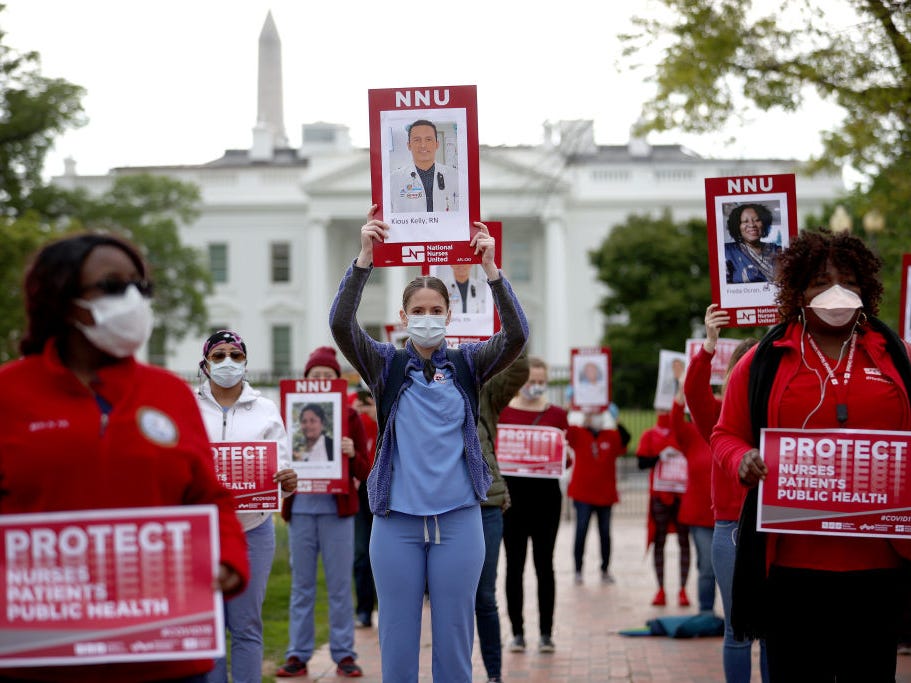
Dozens of nurses held a protest and vigil outside the White House reading the names of 50 healthcare workers who have died after becoming infected by the coronavirus on the job. The protest was organized by National Nurses United, which is demanding the Occupational Safety and Health Administration require adequate personal protective equipment for healthcare workers.
The Centers for Disease Control and Prevention reported 9,200 healthcare workers have tested positive for COVID-19, though the CDC admits the true rate is likely much higher. CDC data shows that 73% of the health workers falling ill are female and their median age is 42. US officials also say they have no comprehensive way to count those who lose their lives trying to save others. A limited CDC infection tally said 27 healthcare worker have died but stressed that the count was drawn from just 16% of the nation’s Covid-19 cases, so the true numbers of healthcare infections and deaths are certainly far higher.
Some states, including Ohio, have reported rates of healthcare worker illness as high as 20% but have not revealed data at the county, city or hospital levels. One health system, Henry Ford in the Detroit area, reported that more than 700 employees tested positive for Covid-19. Yet they have declined to say how many workers died, as in Ohio, to protect patient privacy. Media reports have shown case after case of healthcare workers across the US saying they do not have adequate protective gear to keep from getting sick.
The New York State Nurses Association filed a lawsuit the New York Department of Health and two hospitals Monday for their failure to provide adequate safety measures at the start of the coronavirus crisis. The lawsuits alleges the failures of Gov. Andrew Cuomo’s administration and the two hospitals for not providing sufficient protective equipment, like masks and gowns. NYSNA executive director Pat Kane said that more than 70% of her nurses reported being exposed to the dangerous disease and that most are still untested.
Media outlets revealed last month that at one of the hospitals named in the suit, a shortage of gowns was so dire that nurses battling the coronavirus pandemic at Mount’s Sinai’s Midtown West hospital resorted to wearing trash bags over their uniforms for protection. One of there coworkers, a beloved assistant nursing manager, Kious Kelly, died from the coronavirus. At the time of her death, Mount Sinai insisted there was no shortage of PPE.
Read more

The US Senate overwhelmingly approved $484 billion in new coronavirus aid with most of the money replenishing the Paycheck Protection Program, set up to provide forgivable loans to small businesses. The bill adds another $310 billion to the Paycheck Protection Program, another $75 billion for hospitals, $25 billion for testing and $60 billion for emergency disaster loans and grants.
The bill provides no new stimulus checks for U.S. households, no additional money for food stamps, no limits on fossil fuel bailouts, no funds for election security, no bailout for the U.S. Postal Service and no additional funds for hard-hit state and local governments. Lawmakers were criticized for refusing to take up new assistance to hard-hit U.S. residents — like cash payments and food aid — in the latest relief bill. They were also criticized for not regulating the disbursement of the initial funds which allowed big businesses like corporate chain restaurants getting tens of millions of dollars in loans meant for small businesses.
They contend lawmakers are failing to provide for millions of unemployed people who are unable to pay rent and increasingly at risk of going hungry. Progressive lawmakers are demanding $2,000 monthly payments to all U.S. households and open enrollment in Medicare for uninsured and unemployed people, when lawmakers take up another round of funding, the so-called phase four coronavirus bill.
Senators are in talks for a phase four bill with priorities for that legislation including federal assistance for people having trouble paying rent, according to a Democratic source. Schumer also cited the need for funds for election reform, hazard pay for essential workers, including doctors, nurses and grocery store clerks, and funding for the U.S. Postal Service. Many are skeptical since the virus bailouts have already cost over $2 trillion, pushing our annual deficit this year to close to $4 trillion.
The pandemic continues to batter the U.S. economy as the Labor Department reported another 4.4 million U.S. workers filed for unemployment benefits over the last week, raising new jobless claims over the past five weeks to more than 26 million — a scale that hasn’t been seen since the Great Depression. As of March 13, there were already 7.1 million unemployed Americans, according to the U.S. Bureau of Labor Statistics. When the figures are combined, it would equal more than 33 million unemployed, or a unemployment rate of 20.6%—which would be the highest level since 1934.
Read more
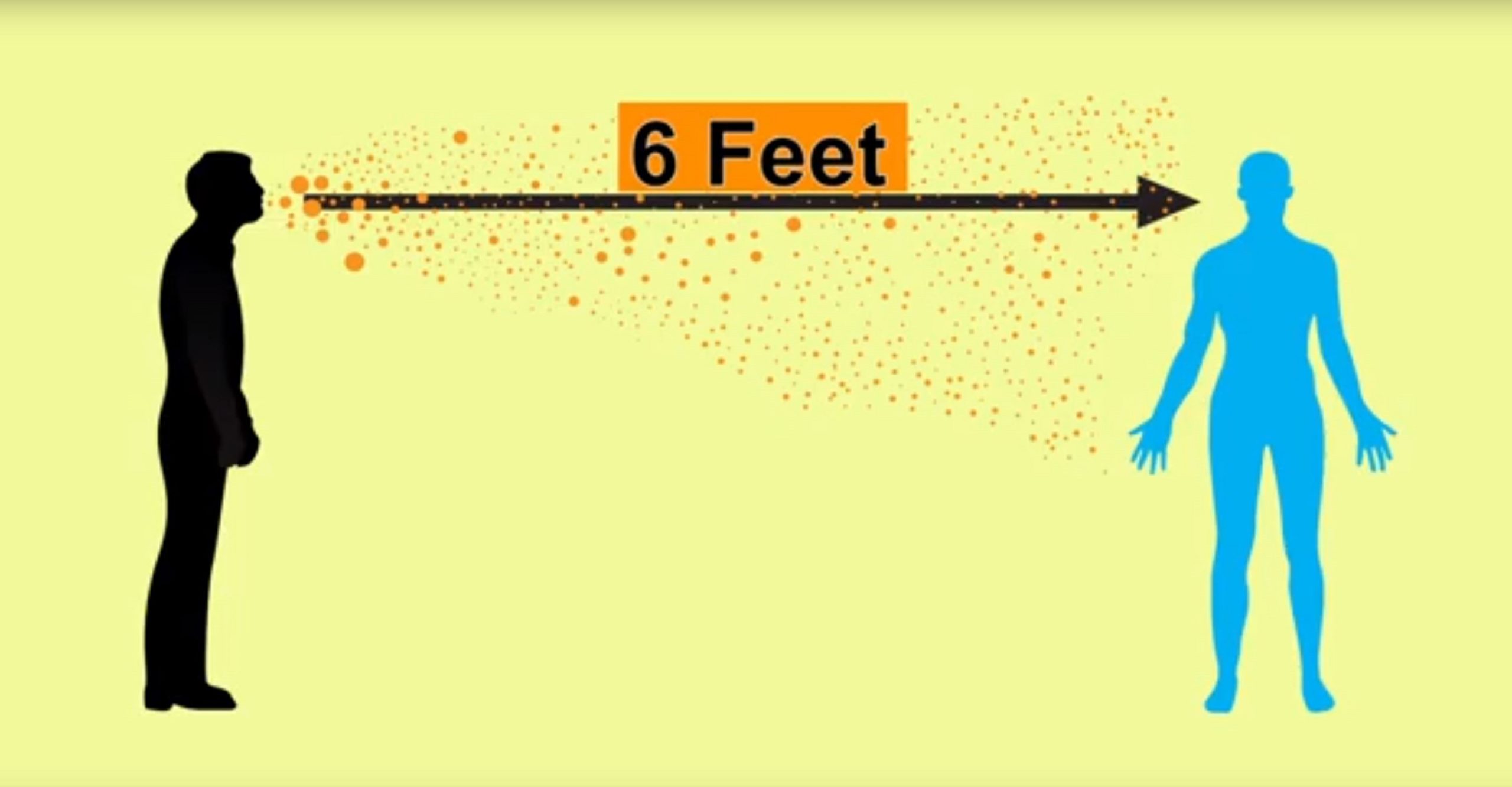
Many Governors across the US are ending stay at home order- many of which have been in place for over a month. Reopening states to business is a difficult and controversial topic. Should states reopen too early, coronavirus cases may spike again, undoing the good social distancing did for weeks. Should they continue to stay closed, small businesses across the state may never recover and fiscal crises could severely damage many states.
Here are the states with orders set to expire:
Alaska Gov. Mike Dunleavy allowed nonessential businesses to reopen for regular business hours, with varying restrictions by sector, on April 24. Many travel and fishing restrictions have also been lifted. Alabama Gov. Brian Kemp said businesses like gyms, hair salons and barber shops could open on April 24 with theaters and restaurants reopening on April 27. Arkansas Gov. Asa Hutchinson never put an official stay-at-home order in place and has announced he hopes to ease some closures on May 4 with an announcement on when restaurants can accept dine-in customers on April 29.
Colorado’s stay-at-home order expired on April 27, moving to a new phase which allows retail businesses to do curbside pickup, other businesses can reopen with medical precautions and elective surgeries may resume. Businesses such as salons, dog groomers, personal trainers and elective medical services will be allowed to open May 1. On May 4, offices may reopen with 50% capacity.
Idaho Gov. Brad Little announced his plan to reopen the state beginning on May 1 and proceeding with four steps through June 13. The first phase would allow most retail establishments and places of worship to reopen, subject to strict social distancing guidelines. Indiana Gov. Mike Holcomb said elective surgeries may resume April 27 and he planned to lessen restrictions in early May.
Iowa has not had a stay-at-home order since April 20 and Gov. Kim Reynolds lifted the ban on nonessential surgeries beginning April 27. Kansas Gov. Laura Kelly said she is moving forward with the goal of reopening the state on May 3 if crucial guidelines are in place. Minnesota Gov. Tim Walz has projected May 4 as a reopening date.
Missouri Gov. Mike Parson is not extending the state’s stay-at-home order, set to expire on May 4. On that day, all businesses may reopen following social distancing guidelines. The mayors of Kansas City and St Louis have stay at home orders with end dates of May 15, which will supersede the state wide order and remain in effect for several counties. Montana Gov. Steve Bullock said the state’s stay-at-home order will be expire on May 3rd and certain nonessential businesses can begin to reopen beginning April 27.
Ohio’s stay-at-home order will expire May 1. Health procedures that do not require an overnight stay in the hospital may resume as well as dental and veterinary services. On May 4, manufacturing, distribution, construction and office work can resume with increased distancing and other health measures. On May 12, retail and other services may resume. Besides that, the stay-at-home order remains in place and gatherings are still limited to fewer than 10 people.
Oklahoma will lift restrictions on barber shops, nail salons, spas, elective surgeries and state parks on April 24. Movie theaters, gyms and restaurants will be allowed to reopen May 1. Pennsylvania Gov. Tom Wolf announced a phased reopening set to begin on May 8. Tennessee’s stay-at-home order would expire on April 30.
On May 1, Texas will allow retail stores, restaurants, movie theaters, malls and museums and libraries to operate at 25% capacity. However in rural counties with few cases, businesses can operate at 50% capacity. The target date for Phase 2 is May 18. Washington Gov. Jay Inslee released a plan to reopen businesses no earlier than May 4 on contingencies of a slowing of the spread of the virus.
Delaware, District of Columbia, Louisiana, Maine, Michigan, New Mexico, South Carolina, Virginia and Vermont have orders set to expire on May 15. New York will also reopen portions of the state on May 15. Connecticut’s stay at home expires on May 20. Wisconsin’s order will expire on May 26. Hawaii’s order will expire on May 30. California, New Jersey, Utah and West Virginia have no end dates to their orders.
Read more

Several thousand cars flooded the streets around the state Capitol in Lansing, Mich. to protest the governor’s extended stay-at-home order. Operation Gridlock, as the protest was named, was conceived as a drive-in protest that would block Lansing streets. Organizers said they support some coronavirus restrictions around social distancing, but believed Whitmer has gone too far. As such, they say they planned a protest that would still maintain social distancing guidelines — without contributing to the spread of infection.
At least 200 people broke from the instructions of organizers, getting out of their vehicles to congregate around the steps of the Capitol building, flouting social-distancing guidelines to remain 6 feet apart, and not wearing masks. Many mask-less protesters, some of whom flew Confederate flags and open-carried AR-15 and AK-47 variants, gathered to demand an end to outbreak-reduction efforts and a premature return to normalcy.
The state of Michigan has the third-highest number of COVID-19 cases, 32,000 and over 2,400 deaths. Gov. Gretchen Whitmer has faced a steady drumbeat of criticism for issuing one of the most stringent stay-at-home orders. Among other things, it bars landscapers from working and shutters many greenhouses and nurseries. She extended her original order last week to now end April 30th. The new version of the order banned travel between homes. As of Monday, more than a quarter of the state’s workforce had filed for unemployment benefits. Southeast Michigan and Detroit remain a hot spot — claiming the lion’s share of COVID-19 cases and deaths. Detroit has more than 7,700 positive cases.
Over the past 10 days, the number of patients hospitalized with COVID-19 dropped 6.7%, to 3,374. During the same period, the number of patients on a ventilator decreased from 1,441 to 1,102, a 24% decline, according to data from the Michigan Department of Health and Human Services. Dr. Joneigh Khaldun, the state’s chief medical officer, attributed the progress to the governor’s March 24 stay-at-home order that was previously extended to April 13.
Whitmer is expected to extend her stay-at-home order, which expires at the end of the month, until there is a larger testing capacity and a significant decline in the number of new cases and deaths. Although the numbers are declining, dozens of people are still dying each day. Some counties that have been hard hit are seeing a decline in new cases but the number of deaths continue to rise.
Read more

As countries impose lengthy lockdowns to combat the spread of the coronavirus, reported cases of domestic abuse have spiked around the world. In the weeks since populations worldwide have been directed to “stay home” to prevent the virus’s spread, cases of domestic violence have surged — and that’s reported cases. Women who are victimized are now confined to isolated homes with abusive partners whose coercive and physically violent tendencies are enabled and further inflamed by economic stressors. Supportive community ties are severed, while emergency services, shelter systems, and social services are overwhelmed and congenitally underfunded.
Millions of Americans are not safe from violent abuse at home and now the federal, state and local governments are telling everyone to stay home – for their own safety. For some people, going to work may be their only reprieve from emotional abuse and violence. For others, the only place their children are safe from abuse is at school. Now they have been told to stay at home. Few jobs are completely safe from the economic fallout of the coronavirus crisis and stressed abusers have their targets at home.
According to statistics released by the U. N., reports of domestic violence in France rose 30% following the country’s lockdown on March 17; during the first two weeks of lockdowns in Spain, the emergency number for domestic violence received 18% more calls; and help lines in Singapore have received 30% more calls. In the US, law enforcement agencies have seen domestic violence cases rise up to 35% in recent weeks. Keeping in mind, that 50% of domestic abuse cases go unreported.
Advocates fear domestic violence survivors may have trouble getting away from their abusers and are calling the rise an epidemic during a pandemic. They are urging communities around the world to make sure resources are readily available for survivors. Even before the pandemic, an average of 20 people in the United States experienced physical domestic violence every minute. Research shows 1 in 4 adult American women and 1 in 7 adult American men have experienced some type of severe violence – including being hit with something hard, being kicked or beaten, or being burned on purpose – at the hands of an intimate partner.
Advocates are already seeing a pattern of increasing domestic violence around the world, correlating with the timing of social distancing lockdowns. In Seattle, one of the first U.S. cities to have a major outbreak, the police saw a 21% increase in domestic violence reports in March. In Texas, during March the Montgomery County District Attorney saw a 35% increase in domestic violence cases. Police around the country are adapting their domestic violence response plans to prepare for the expected increases and to ensure victims can get help even with restrictions on public movement.
Many organizations that serve survivors of domestic violence may also struggle to stay afloat during the pandemic. Many child-protective organizations are experiencing strain with fewer workers available, so they may be unable to conduct home visits in areas with stay-at-home orders. While such operational changes may lead to inaccurate reporting of child abuse and neglect, many advocates are expecting a surge in cases to continue to rise while they’re resources are still limited during the pandemic. The recent US$2 trillion federal CARES Act included assistance for nonprofits that provide support for domestic violence victims, letting them apply for business loans and help meeting payroll.
Read more
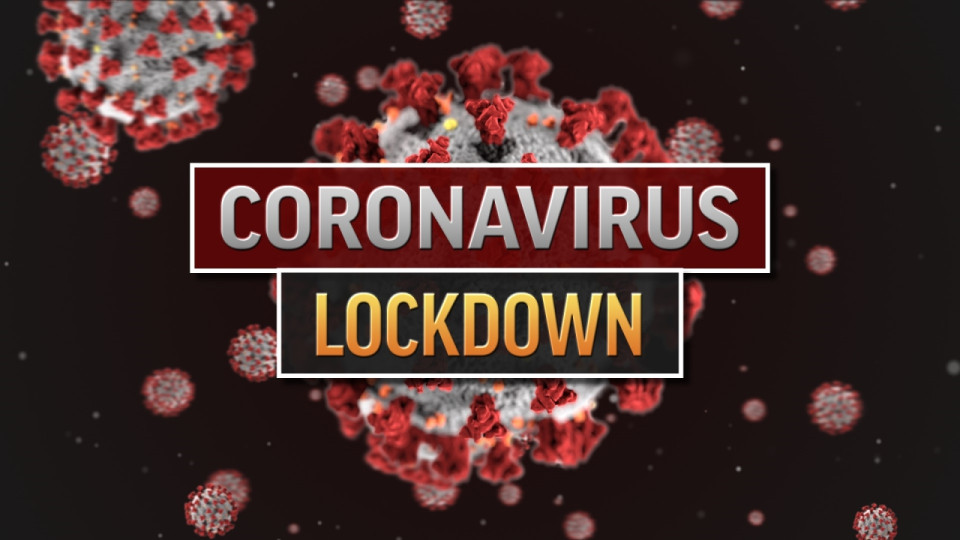
Millions of U.S. residents are now under some sort of stay-at-home order in response to the Covid 19 pandemic. There are now over 500,000 confirmed COVID-19 cases in the U.S. — more than one-quarter of the reported total cases worldwide, though the actual numbers both in the U.S. and around the world are likely much higher due to limited testing. Governors that were originally against stay-at-home orders finally succumbed last week after COVID-19 cases in their states increased rapidly.
There are still a few states that have not issued stay at home orders. Arkansas, Iowa, Nebraska, North Dakota, South Dakota, Utah and Wyoming have yet to issue any state-wide orders but they have a number of local directives suggesting residents stay indoors or have stay at home orders in place only in their harder hit counties.
For the other 95% of Americans, the states they call home slowly joined the majority to issue stay at home orders for all non-essential activities. Just as governors issued stay-at-home orders on a rolling, piecemeal basis, they have done the same on the backend, with each governor setting his or her own time frame for lifting the order. Consequently, we have end dates spanning two months, from April 15 to June 10. More than half of the states have already extended the end date of their original order and the new end date could be pushed back again as the pandemic unfolds.
Three Pacific coast states — California, Oregon and Washington — have formed an alliance called the “Western States Pact” that will reopen at the same time. They announced that they “have agreed to work together on a shared approach for reopening our economies – one that identifies clear indicators for communities to restart public life and business.” California was the first to issue its order but within 3 days, Oregon and Washington followed suit. All three states orders were issued with no set end date so their orders stay in place until further notice.
On the east coast, seven states — Connecticut, Delaware, Massachusetts, New Jersey, New York, Pennsylvania and Rhode Island — have formed the “Multi-State Council” that will also reopen at the same time. New York Governor Andrew Cuomo said the council “will come up with a framework based on science and data to gradually ease the stay at home restrictions and get our economy back up and running.” Many of these states with an end date on their original order issued extensions with new dates in May.
Two states have stay-at-home orders that are set to expire soon; Idaho (April 15) and Kansas (April 19). Both Idaho Governor Brad Little and Kansas Governor Laura Kelly have indicated that they will extend the orders. Eight states’ orders are due to expire between April 20 and April 26. Indiana, Mississippi, Alaska, District of Columbia, Missouri, Montana, Wisconsin and Colorado are fast approaching their end dates. Four governors — half of this group — have already issued one extension and several have stated they are planning another.
For the last week of April, 19 states are due to lift their stay-at-home mandates. South Carolina, New York, North Carolina, Alabama, Arizona, Florida, Georgia, Hawaii, Illinois, Louisiana, Maine, Michigan, Nevada, New Mexico, Pennsylvania, Tennessee and Texas have end dates at the end of April but again, more than half of the governors in this group have already extended the end dates for their orders once.
Nine states have stay-at-home orders that end May 4 or later. Notably, seven of them have already bumped back their end dates once, from April to May. If the trend continues, we can expect more states to be extending their mandates into May.
Read more
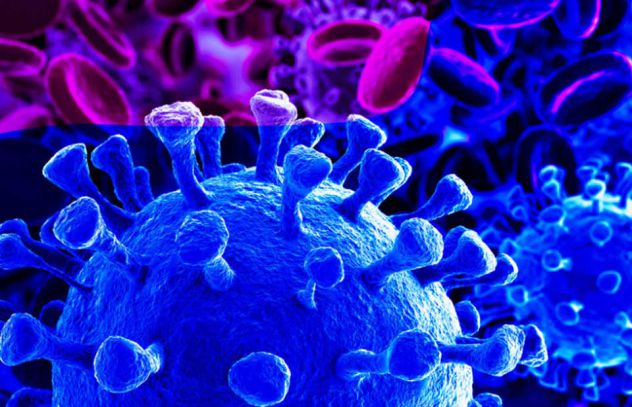
The coronavirus pandemic continues in almost every corner of the globe, with the number of confirmed COVID-19 cases worldwide surpassing 1 million people — though the true number is certain to be far higher due to a critical lack of testing globally. The largest number of cases is in the United States with over 350,000 confirmed. Over 10,000 people in the US have died of Covid-19 as the virus continues to spread.
In Europe, COVID-19 has pushed hospitals across the continent past their breaking points. Spain has reported over 120,000 cases and their death toll topped 10,000. In the U.K., London’s ExCeL convention center has been converted into an enormous field hospital with plans to treat up to 4,000 COVID-19 patients. Over 2,300 people have died from the disease across the U.K.
In Italy, there are over 100,000 confirmed cases and their COVID-19 deaths have topped 15,000. It’s been reported that Italy’s true toll is far higher because the country can’t spare the resources to test every dead body. U.S. Vice President Mike Pence said models predict the United States faces a trajectory of COVID-19 deaths similar to Italy’s. The computer model used by the White House projects close to 82,000 COVID-19 deaths in the United States by August 4, assuming the country implements full social distancing until the end of May.
The 81,766-death projection is a slightly less grim figure than the 93,531 cited earlier by the administration. The model projects that the country may need fewer hospital beds, ventilators and other equipment than previously estimated, and that some states may reach their peak of COVID-19 deaths sooner than expected. Not all states are using the federal government’s forecasting model.
While the White House projects that coronavirus cases in the nation’s capital would peak later this month, the local Washington, DC government is relying on a different computer model that says it won’t peak until late June or early July. Health experts warn against early optimism and say it’s best to prepare for worst case scenarios.
Experts say that pandemic modelling is almost never precise and the Covid-19 pandemic, the uncertainty in the projections is because of lack of access to good data coupled with the fact that we just don’t know enough about the coronavirus. Another factor that adds to the uncertainty is how people will behave and what kinds of policies will be enacted to change contact patterns in the weeks and months ahead. The ranges estimated really depends on how much people actually adhere to social distancing policies and how quickly these policies are issued.
Read more
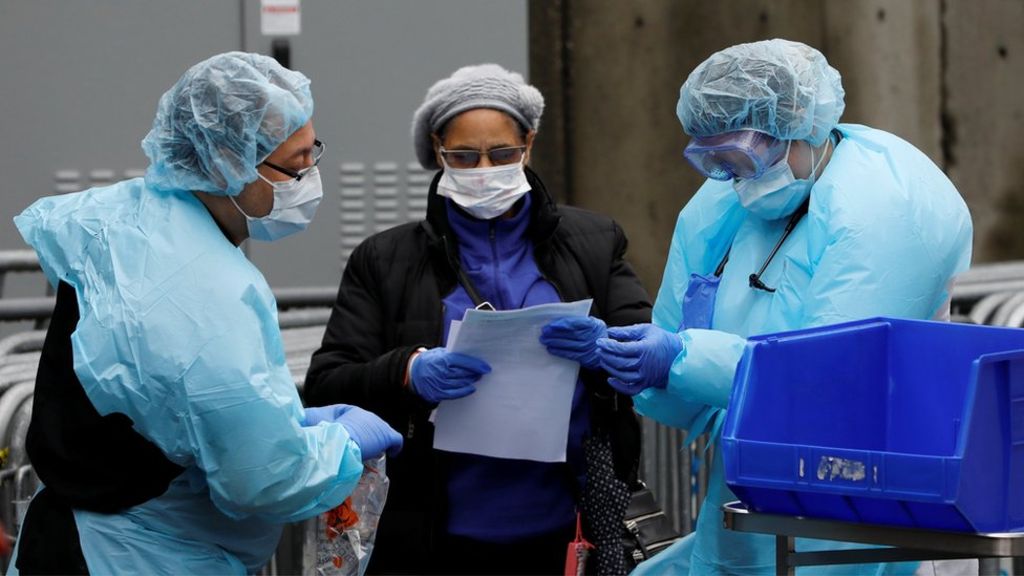
In New York City, the epicenter of the US crisis, the death toll from COVID-19 is over 4,500 and continuing to climb. There have been more than 140,000 confirmed cases of the coronavirus discovered in New York, including more than 76,876 in New York City. Thirty-five percent of the confirmed cases in the US are in the state of New York. Governor Andrew Cuomo warned state residents to expect a high death rate through July.
The Federal Emergency Management Agency is dispatching more than 250 ambulances and 85 refrigerated trucks to New York to serve as temporary morgues. In Central Park, an emergency field hospital began operations to treat spillover patients from nearby Mount Sinai Hospital. Mayor Bill de Blasio has repeatedly warned city hospitals are in dire need of millions of masks, hundreds of thousands of gowns and hundreds of ventilators, and are on the brink of running out of supplies.
Following complaints by health care workers about their inability to get tested for the coronavirus despite a colleague recently dying from COVID-19, the Mount Sinai hospital system in New York City will begin providing tests on Tuesday for any employee who shows symptoms of the disease. Mount Sinai will use PCR tests for anyone showing symptoms. They will also administer a serum antibody test to anyone who was symptomatic.
The Justice Department and Department of Health and Human Services announced that hundreds of thousands of masks and other pieces of medical equipment seized from a Brooklyn man have been distributed to medical workers on the front lines treating novel coronavirus patients in New York and New Jersey. According to the DOJ, the equipment seized and distributed includes roughly 192,000 N95 respirator masks, nearly 600,000 medical gloves, 130,000 surgical masks, procedure masks, N100 masks, surgical gowns, disinfectant towels, particulate filters, bottles of hand sanitizer and disinfectant spray. Prosecutors say 43-year-old Baruch Feldheim hoarded the supplies in order to take advantage of the COVID-19 crisis and was selling them to doctors and nurses at prices as much as 700% above market value.
Governor Cuomo said it’s unclear what will happen after New York hits its peak. Cases could begin dropping off or there could be more of a plateau effect, in which new cases and death rates remain flat. Cuomo said the falling rate of infection will not be met with a slackening of social-distancing measures. Schools and nonessential business will remain closed at least until April 29 and there will be higher fines for people violating social-distancing rules. The maximum fine is now $1,000.
Read more












